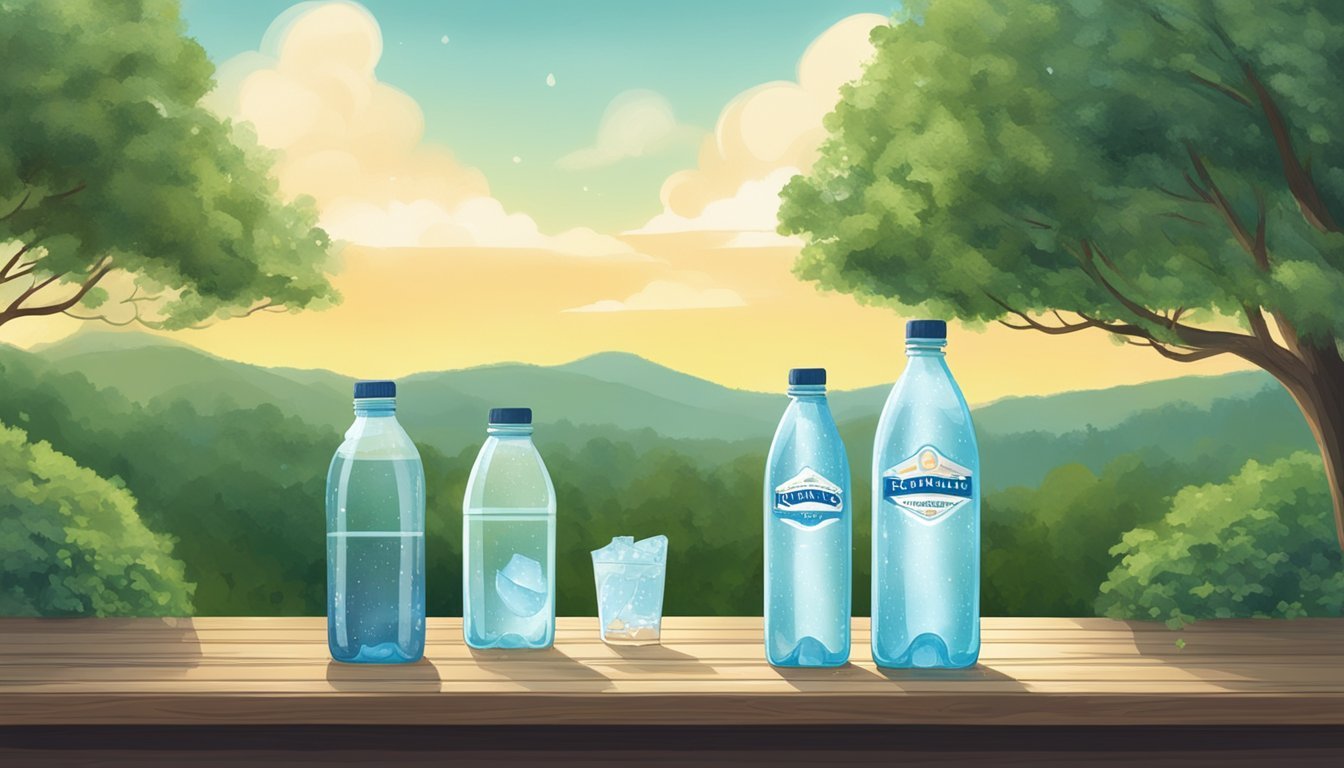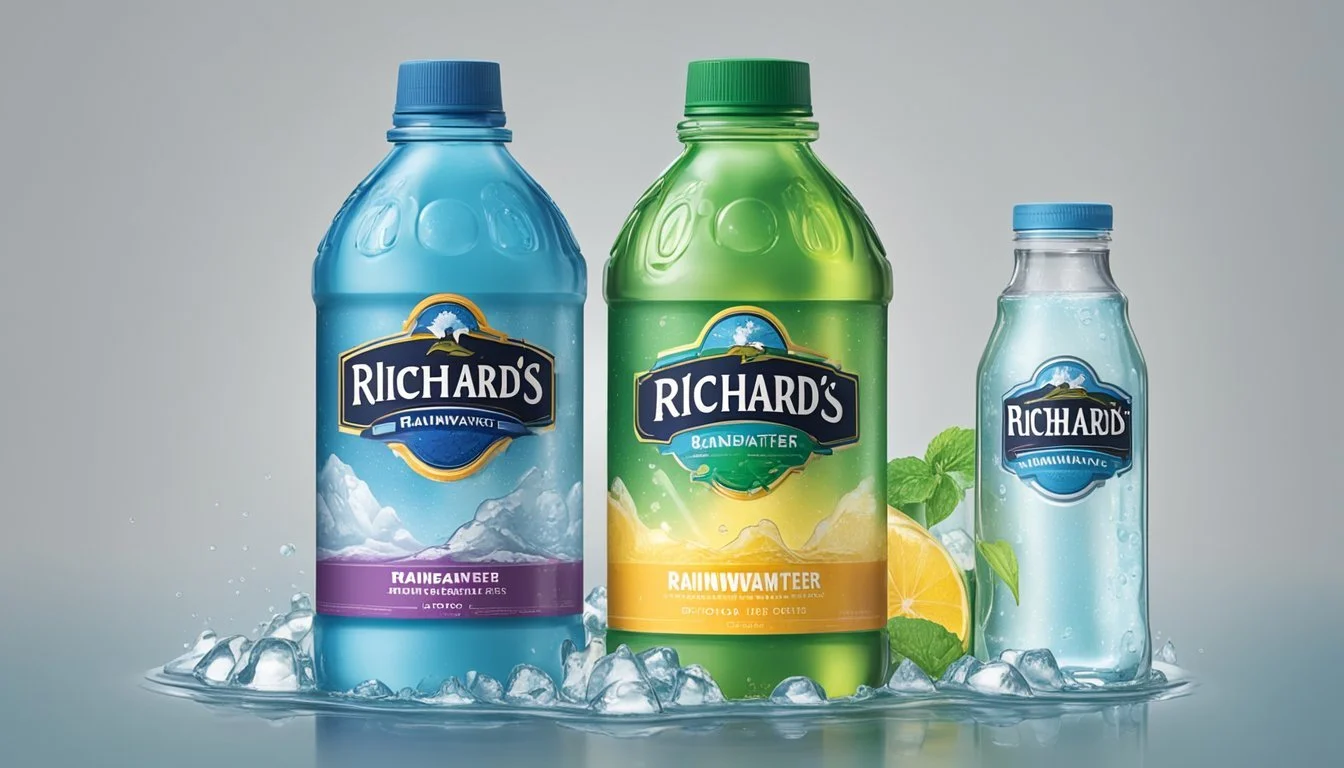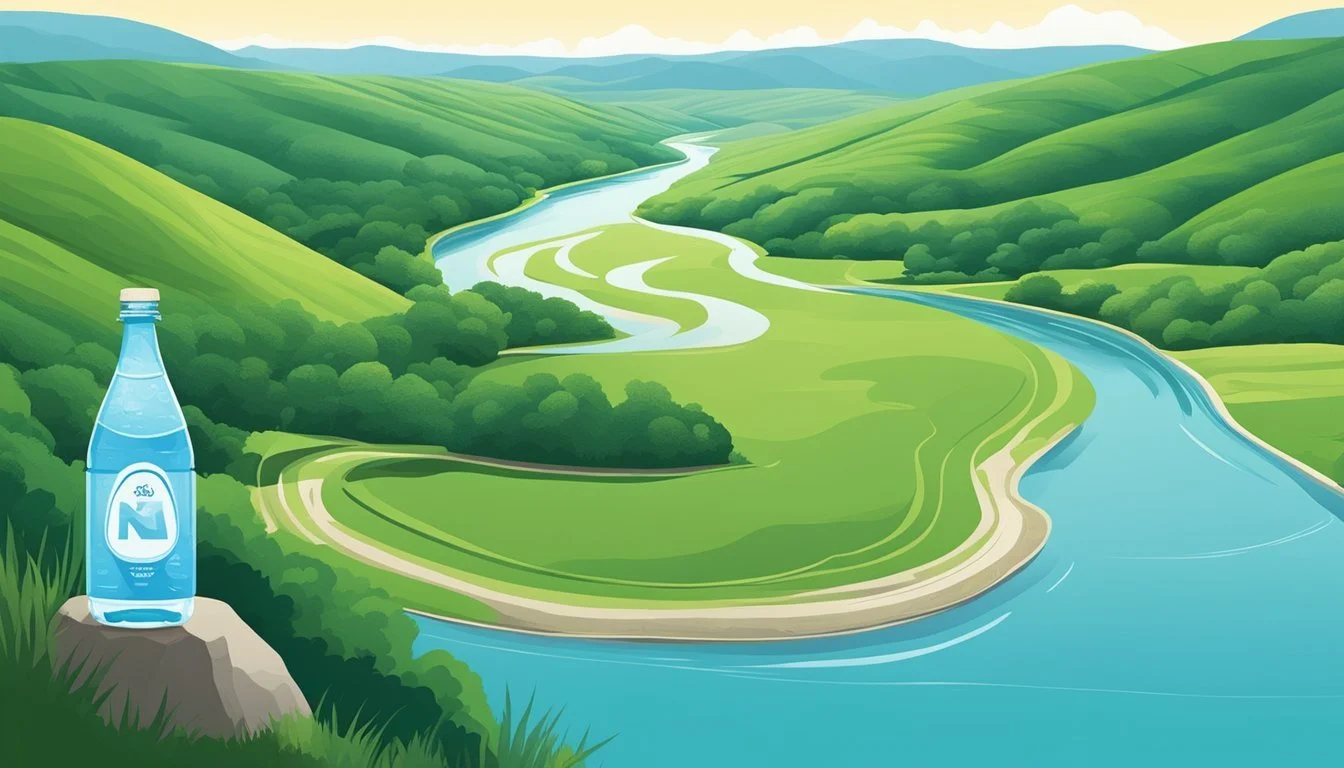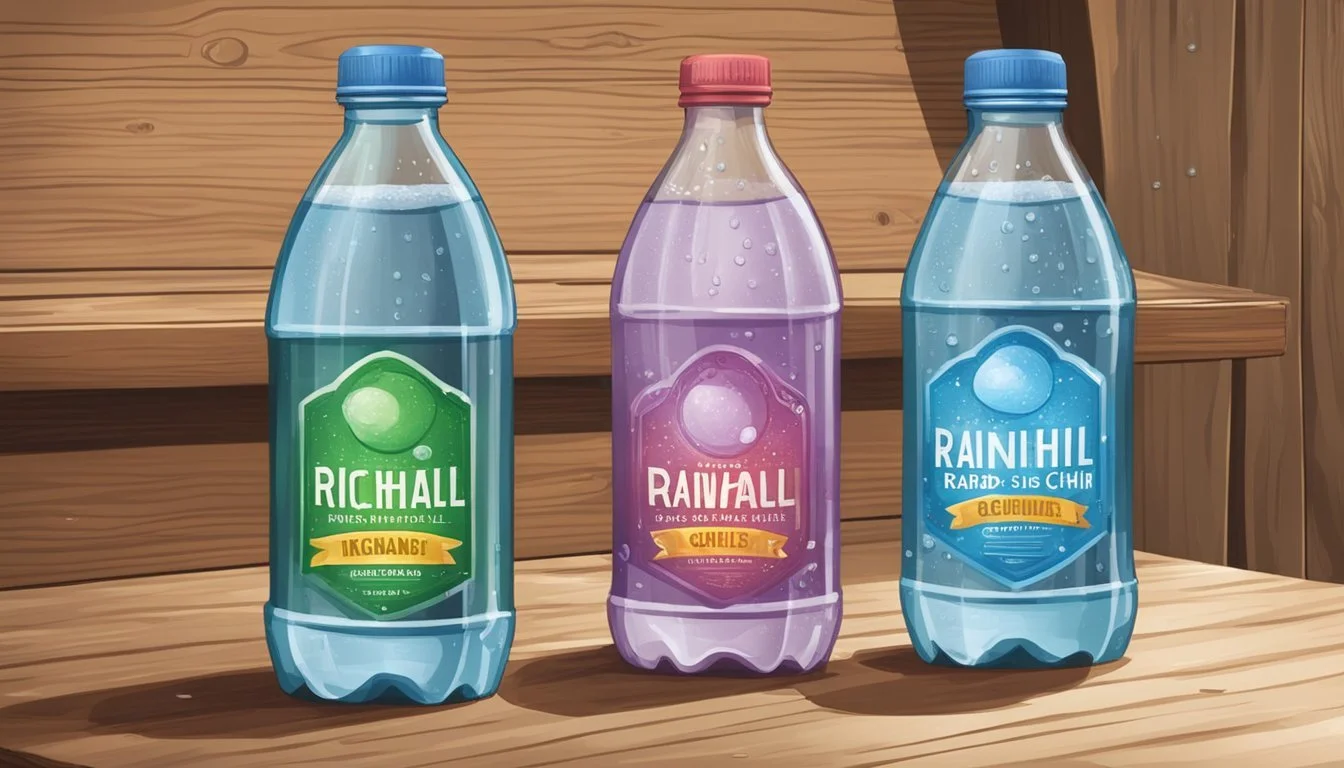Richard’s Rainwater vs. Big Chill
A Comparative Analysis of Bottled Water Quality
Choosing between Richard’s Rainwater and Big Chill bottled water can be a challenge for many consumers. Each brand offers unique qualities that cater to different hydration needs. Richard's Rainwater stands out by using a proprietary, zero-waste filtration system that collects and purifies rainwater, making it a sustainable and eco-friendly option.
Big Chill, on the other hand, is known for its clean and crisp taste. This brand prioritizes affordability without compromising on quality, making it a favorite among those who seek cost-effective solutions. Consumers who value both taste and budget may find Big Chill to be a compelling choice.
As the bottled water market evolves, understanding the distinct advantages of Richard’s Rainwater and Big Chill becomes crucial. Whether prioritizing sustainability or focusing on taste and affordability, this comparison will provide clear insights to help you make an informed decision.
Understanding Bottled Water
Bottled water varies widely in source, composition, and packaging. It's essential to understand these differences to make informed choices about the product you consume.
Types of Bottled Water
Bottled water can generally be categorized into still water and sparkling water. Still water does not have carbonation, while sparkling water contains dissolved carbon dioxide gas.
Spring water is sourced from underground springs, retaining natural minerals. Mineral water has a higher concentration of minerals, often derived from geological formations.
Purified water undergoes processes like reverse osmosis or distillation to remove impurities, ensuring it meets strict standards for purity. Each type offers unique benefits and caters to different preferences and needs.
Regulations and Standards
Bottled water is subject to stringent regulations to ensure safety and quality. In the U.S., the FDA oversees bottled water standards, requiring it to meet the same safety standards as tap water.
Producers must comply with Good Manufacturing Practices (GMPs), sanitation standards, and regular testing for contaminants. Labels must accurately describe the product, including its source and mineral content.
Many companies also follow voluntary standards set by organizations like the International Bottled Water Association (IBWA), which go beyond legal requirements to ensure the highest quality.
Bottle Packaging Materials
The packaging of bottled water is crucial for both quality preservation and environmental impact. The most common materials are plastic bottles, glass bottles, and aluminum cans.
Plastic bottles are lightweight and convenient but raise environmental concerns due to recycling challenges and potential leaching of chemicals. Glass bottles provide a premium feel and are inert, eliminating chemical interactions with the water. They are, however, heavier and more fragile.
Aluminum cans offer a lightweight and recyclable option, reducing environmental impact. Each packaging material has its pros and cons, influencing the choice based on sustainability and user preference.
By understanding these aspects, consumers can make better decisions regarding the bottled water they purchase and consume.
Brand Overview
Richard's Rainwater and Big Chill occupy distinct niches in the bottled water market. While Richard's Rainwater emphasizes sustainability and innovative rainwater harvesting, Big Chill focuses on wide market presence and product consistency.
Richard's Rainwater's Origin and Philosophy
Richard's Rainwater, founded by Richard Heinichen, originates from the belief that rainwater can be a sustainable source of drinking water. The company harvests rainwater using a closed-loop system that minimizes water loss during filtration.
Sustainability is a core value, as the product aims to reduce environmental impact with infinitely recyclable bottles. This approach not only provides pure drinking water but also helps in replenishing the drinking water supply.
The company describes its water as exceptionally clean and smooth, emphasizing quality and eco-friendliness in its branding.
Big Chill's Market Presence
Big Chill is a widely recognized name in the bottled water industry, known for its extensive market reach. Unlike niche brands, Big Chill is readily available in numerous grocery stores and retailers across the country.
Their consistent product quality and effective branding strategies have cemented their presence in the market. They focus on delivering a reliable and familiar product, appealing to a broad consumer base.
Though not specifically aligned with a sustainability mission, Big Chill's extensive distribution network ensures that it remains a go-to choice for a large segment of bottled water consumers.
Environmental Impact
Examining the environmental impact of Richard’s Rainwater and Big Chill highlights their approaches to sustainability and resource management. Key areas include sustainable practices, the method of rainwater harvesting, and their commitments to packaging and recycling.
Sustainable Practices
Richard’s Rainwater prioritizes a net-positive environmental impact by leveraging renewable sources. They collect rainwater before it contacts any ground pollutants, minimizing the need for extensive purification. This practice maintains the natural purity of the water, showcasing their commitment to sustainability. Additionally, their operations often target rainiest cities, ensuring a reliable water supply and reducing strain on local groundwater.
Big Chill, while not as focused on rainwater, emphasizes sustainably sourced water extracted from controlled environments. Their efforts to maintain a low carbon footprint are evident in their energy-efficient bottling processes and reliance on local sources to decrease transportation emissions. Both brands strive to optimize resource use and support environmental conservation goals.
Rainwater Harvesting
Richard’s Rainwater employs a unique method of collecting rainwater using proprietary technology. This approach captures rain directly from cloud to bottle, avoiding ground contamination. The water undergoes minimal purification, preserving natural characteristics and reducing energy consumption associated with traditional purification methods. Their focus on using a renewable source like rainwater aligns with a broader net-positive impact philosophy.
Big Chill does not utilize rainwater but focuses on deep aquifers as their primary resource. Although effective, this method involves substantial energy for water extraction and purification. While they ensure the water quality remains high, the environmental costs of accessing and processing this water are generally higher than those associated with direct rainwater collection.
Packaging and Recycling
Richard’s Rainwater emphasizes packaging solutions that promote recycling. They extensively use glass and aluminum, both highly recyclable materials with lower environmental impacts compared to single-use plastic. Their packaging strategy reflects a commitment to reducing waste and ensuring materials can be recycled efficiently.
In contrast, Big Chill offers a mix of glass and plastic containers. While they do encourage recycling, the proportion of reusable packaging materials is less compared to Richard's Rainwater. Their initiatives to improve recycling rates and reduce waste emphasize educating consumers and providing convenient recycling options. Both brands aim to balance convenience and environmental responsibility through their packaging choices.
This section provides detailed insights into how Richard’s Rainwater and Big Chill address the environmental impact of their products, emphasizing their sustainable practices, methods, and packaging solutions.
Product Analysis
Richard’s Rainwater and Big Chill bottled waters appeal to different consumer preferences due to their unique water sources, taste profiles, and purification techniques.
Water Source and Quality
Richard's Rainwater collects water directly from rain, bypassing traditional sources like groundwater or tap water. This method starts with capturing rainwater, reducing potential exposure to contaminants typically found in soil and municipal systems. Their zero-waste approach ensures clean water that maintains its natural purity.
Big Chill, on the other hand, sources its drinking water from spring or artesian wells. These sources are naturally filtered but can still contain minerals and potential impurities. They often rely on regional groundwater, which varies in quality due to local environmental factors.
Taste and Mineral Content
The taste of Richard's Rainwater is often described as crisp and neutral, attributed to its minimal mineral content. The rainwater undergoes a stringent purification process, ensuring it is potable and free of common tap water additives like chlorine and fluoride. This results in a clean, refreshing taste without the aftertaste some experience with treated water.
Big Chill’s water, originating from underground sources, contains naturally occurring minerals such as calcium and magnesium. These minerals can enhance the water’s flavor, offering a slightly mineralized taste that some consumers prefer. However, this variability can impact the consistency of its taste profile.
Filtration and Purification Processes
Richard’s Rainwater uses a proprietary filtration process that includes ultraviolet light treatment and advanced filtration to remove biological or particulate contaminants. Being chlorine-free and zero-waste, their process emphasizes sustainability while ensuring high-quality, potable water.
Big Chill employs standard filtration techniques like carbon filtering and reverse osmosis to purify the groundwater. These methods efficiently remove chemicals, ammonia, and other impurities, resulting in clean drinking water. Despite differences in purification methods, both brands aim to deliver pure, safe water to their consumers.
Market Footprint
Richard’s Rainwater and Big Chill both hold unique positions in the bottled water market, with distinct strategies for retail distribution, partnerships, and consumer outreach.
Retail and Distribution
Richard’s Rainwater is primarily available in a variety of state and local grocery stores, including major chains like Whole Foods and Kroger. Their origin is rooted in Texas, and they have made significant inroads in New Orleans and Mississippi markets.
Big Chill, on the other hand, has a robust presence in retail outlets like Albertsons and other regional grocery stores. They leverage a broad distribution network to ensure their products are widely available.
Richard’s Rainwater:
Whole Foods
Kroger
Local stores in Texas, New Orleans, Mississippi
Big Chill:
Albertsons
Extensive regional network
Partnerships and Collaborations
Richard’s Rainwater collaborates with environmental organizations to boost their eco-friendly image. By partnering with Texas-based sustainability groups, they aim to underscore their commitment to renewable water sources. They also have strategic alliances with grocery retailers for enhanced shelf space which improves visibility.
Big Chill's partnerships often focus on health and wellness. They work closely with sports events and fitness centers to promote their brand. By collaborating with regional health brands, they enhance their presence in communities concerned about healthy hydration.
Richard’s Rainwater:
Environmental organizations
Texas sustainability groups
Strategic grocery partnerships
Big Chill:
Sports events
Fitness centers
Health and wellness collaborations
Consumer Base and Sales Expansion
Richard’s Rainwater targets eco-conscious consumers who prioritize sustainability. Their marketing emphasizes a low-carbon footprint and renewable sourcing, appealing to a growing demographic concerned about environmental impact. They've experienced increased sales particularly in urban areas of Texas and adjacent states.
Big Chill appeals to a health-focused consumer base. Their robust sales campaigns focus on the purity and health benefits of their water. Expansion efforts have successfully penetrated grocery stores and wellness-driven communities, boosting their market presence.
Richard’s Rainwater:
Eco-conscious individuals
Urban areas in Texas, New Orleans, Mississippi
Emphasis on sustainability
Big Chill:
Health-focused consumers
Grocery and wellness communities
Health and purity campaign focus
Social and Digital Presence
Richard’s Rainwater and Big Chill both leverage digital platforms to broaden their reach and connect with consumers. Their strategies and engagement levels vary, making a comparison insightful for understanding their digital impact.
Online Marketing Strategies
Richard’s Rainwater emphasizes branding through Instagram and LinkedIn. Their Instagram is filled with visually appealing content showcasing their eco-friendly practices, using hashtags effectively to reach broader audiences. On LinkedIn, they share informative posts about water sustainability, establishing themselves as thought leaders in the industry.
Big Chill, on the other hand, employs a robust digital footprint across multiple platforms. They focus on Twitter for real-time updates and customer interactions, using influencer marketing to increase their reach. Their marketing strategies involve a mix of promotional campaigns and user-generated content to deepen brand association.
Consumer Engagement
Richard’s Rainwater engages with its communities by actively responding to comments and messages on social media, creating a sense of connection. They organize online events like Q&A sessions and live tours of their water collection and filtration process. Their strategy enhances consumer trust and loyalty by promoting transparency.
Big Chill focuses on interactive campaigns to boost consumer engagement. They run contests, polls, and surveys on social media to gather feedback and create a dialogue with their audience. Their approach to consumer engagement is dynamic, aiming to keep their audience informed and involved in brand activities, which helps maintain a strong branding presence online.
Comparative Summary
Richard's Rainwater and Big Chill offer distinct bottled water experiences, each with unique characteristics and market positions.
Richard's Rainwater sources its water through rainwater collection. This method eliminates many common contaminants found in traditional sources. The collected rainwater undergoes rigorous purification, including filtration and UV light treatment. Their approach underscores a strong focus on sustainability.
Big Chill, on the other hand, often sources its water from natural springs. This brand highlights the purity and mineral content of its water, attracting consumers looking for naturally sourced hydration.
Sales and Market Comparison
Richard's Rainwater reports significant progress in the market, collecting over 4 million gallons from two U.S. locations in 2022. Their focus on sustainability and innovative sourcing methods appeals to eco-conscious consumers.
Big Chill enjoys widespread recognition and availability due to its established reputation. The brand leverages its broad distribution network to maintain strong sales figures across different regions.
Consumer Preference
Consumers who prioritize sustainability might lean towards Richard's Rainwater because of its eco-friendly methods. The brand prominently markets its commitment to reducing environmental impact.
In contrast, consumers seeking water with natural minerals may prefer Big Chill. The brand's appeal lies in its traditional approach to sourcing from natural springs, marketing its product's taste and health benefits.
Focus on Sustainability
Richard's Rainwater sets itself apart through its environmentally friendly practices, attracting environmentally conscious buyers. Their marketing emphasizes minimal environmental impact, positioning the brand as a leader in sustainable water solutions.
Big Chill also incorporates some elements of sustainability but focuses more on the purity and natural origin of its water, which resonates with a different segment of the market.
More About Richard’s Rainwater
Acqua Pana vs Richard's Rainwater: Which Bottled Water is Better?
Alkaline88 vs Richard's Rainwater: Which Bottled Water is Better?
Antipodes vs Richard's Rainwater: Which Bottled Water is Better?
Aqua Carpatica vs Richard's Rainwater: Which Bottled Water is Better?
Aquafina vs Richard's Rainwater: Which Bottled Water is Better?
Arrowhead vs Richard's Rainwater: Which Bottled Water is Better?
Boxed Water vs Richard's Rainwater: Which Bottled Water is Better?
Cascade Mountain vs Richard's Rainwater: Which Bottled Water is Better?
Castle Rock vs Richard's Rainwater: Which Bottled Water is Better?
Cirro vs Richard's Rainwater: Which Bottled Water is Better?
Core Hydration vs Richard's Rainwater: Which Bottled Water is Better?
Crystal Geyser vs Richard's Rainwater: Which Bottled Water is Better?
Deer Park vs Richard's Rainwater: Which Bottled Water is Better?
Erewhon vs Richard's Rainwater: Which Bottled Water is Better?
Essentia vs Richard's Rainwater: Which Bottled Water is Better?
Eternal vs Richard's Rainwater: Which Bottled Water is Better?
Ethos vs Richard's Rainwater: Which Bottled Water is Better?
Evian vs Richard's Rainwater: Which Bottled Water is Better?
Hawaii Volcanic vs Richard's Rainwater: Which Bottled Water is Better?
Hawaiian Springs vs Richard's Rainwater: Which Bottled Water is Better?
Ice Mountain vs Richard's Rainwater: Which Bottled Water is Better?
Icelandic Glacial vs Richard's Rainwater: Which Bottled Water is Better?
Just Water vs Richard's Rainwater: Which Bottled Water is Better?
Kroger vs Richard's Rainwater: Which Bottled Water is Better?
LIFEWTR vs Richard's Rainwater: Which Bottled Water is Better?
Liquid Death vs Richard's Rainwater: Which Bottled Water is Better?
Mananalu vs Richard's Rainwater: Which Bottled Water is Better?
Mountain Valley Spring Water vs Richard's Rainwater: Which Bottled Water is Better?
Nestle Pure Life vs Richard's Rainwater: Which Bottled Water is Better?
Origin vs Richard's Rainwater: Which Bottled Water is Better?
Ozarka vs Richard's Rainwater: Which Bottled Water is Better?
Penta vs Richard's Rainwater: Which Bottled Water is Better?
Perrier vs Richard's Rainwater: Which Bottled Water is Better?
Poland Spring vs Richard's Rainwater: Which Bottled Water is Better?
Purely Sedona vs Richard's Rainwater: Which Bottled Water is Better?
Richard's Rainwater vs 1907water: Which Bottled Water is Better?
Richard's Rainwater vs 7-Select: Which Bottled Water is Better?
Richard's Rainwater vs Action: Which Bottled Water is Better?
Richard's Rainwater vs Big Win: Which Bottled Water is Better?
Richard's Rainwater vs BodyArmor: Which Bottled Water is Better?
Richard's Rainwater vs CBD Living: Which Bottled Water is Better?
Richard's Rainwater vs Crystal Lake: Which Bottled Water is Better?
Richard's Rainwater vs Dasani: Which Bottled Water is Better?
Richard's Rainwater vs Essence pH10: Which Bottled Water is Better?
Richard's Rainwater vs HFactor: Which Bottled Water is Better?
Richard's Rainwater vs Kirkland Signature: Which Bottled Water is Better?
Richard's Rainwater vs Open Water: Which Bottled Water is Better?
Richard's Rainwater vs Ophora: Which Bottled Water is Better?
Richard's Rainwater vs Proud Source: Which Bottled Water is Better?
Richard's Rainwater vs Pure Life: Which Bottled Water is Better?
Richard's Rainwater vs Ramona: Which Bottled Water is Better?
Richard's Rainwater vs Refreshe: Which Bottled Water is Better?
Richard's Rainwater vs Simple Truth: Which Bottled Water is Better?
Richard's Rainwater vs Skyra: Which Bottled Water is Better?
Richard's Rainwater vs Talking Rain AQA: Which Bottled Water is Better?
Richard's Rainwater vs The Well: Which Bottled Water is Better?
Richard's Rainwater vs Weird Water: Which Bottled Water is Better?
Richard's Rainwater vs Whole Foods 365: Which Bottled Water is Better?
Richard's Rainwater vs Zenwtr: Which Bottled Water is Better?
San Pellegrino vs Richard's Rainwater: Which Bottled Water is Better?
Smartwater vs Richard's Rainwater: Which Bottled Water is Better?
Solan de Cabras vs Richard's Rainwater: Which Bottled Water is Better?
Starkey vs Richard's Rainwater: Which Bottled Water is Better?
Tahoe vs Richard's Rainwater: Which Bottled Water is Better?
Topo Chico vs Richard's Rainwater: Which Bottled Water is Better?
Tru Alka vs Richard's Rainwater: Which Bottled Water is Better?
Volvic vs Richard's Rainwater: Which Bottled Water is Better?
Waiakea vs Richard's Rainwater: Which Bottled Water is Better?
Whole Foods Italian Still Mineral water vs Richard's Rainwater: Which Bottled Water is Better?
Zephyrhills vs Richard's Rainwater: Which Bottled Water is Better?
More About Big Chill
Big Chill vs Kirkland Signature: Which Bottled Water is Better?
Big Chill vs Talking Rain AQA: Which Bottled Water is Better?
Big Chill vs Whole Foods 365: Which Bottled Water is Better?
Cascade Mountain vs Big Chill: Which Bottled Water is Better?
Hawaii Volcanic vs Big Chill: Which Bottled Water is Better?
Hawaiian Springs vs Big Chill: Which Bottled Water is Better?
Icelandic Glacial vs Big Chill: Which Bottled Water is Better?
Mountain Valley Spring Water vs Big Chill: Which Bottled Water is Better?
Nestle Pure Life vs Big Chill: Which Bottled Water is Better?
Solan de Cabras vs Big Chill: Which Bottled Water is Better?
Whole Foods Italian Still Mineral water vs Big Chill: Which Bottled Water is Better?






